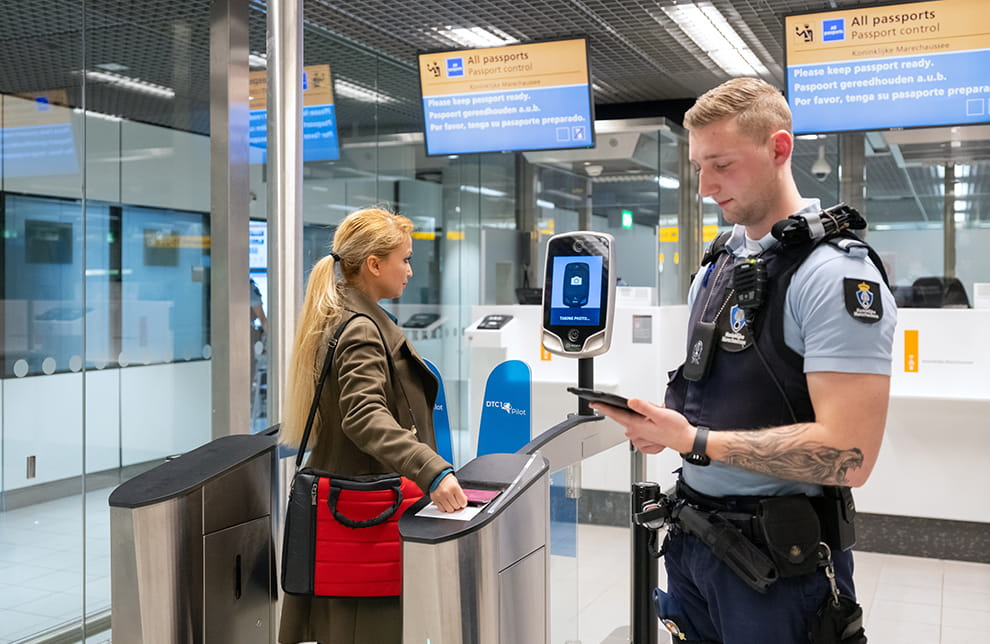Sustainable taxiing:: A bold step forward or pie in the sky?
Air travel brings the world within our reach. But flying also has a downside: its impact on people and the planet. These are issues that concern many people and we are no exception. That’s why we have devoted much of our working lives to making aviation more sustainable. Schiphol aims to operate the most sustainable and high-quality airports in the world and to achieve emission-free operations at its own locations by 2030. While it will be decades before we can expect to see emission-free aircraft on a large scale at airports, we cannot simply sit around and wait for good things to happen. There are other ways to make an impact. Sustainable taxiing has a major role to play.
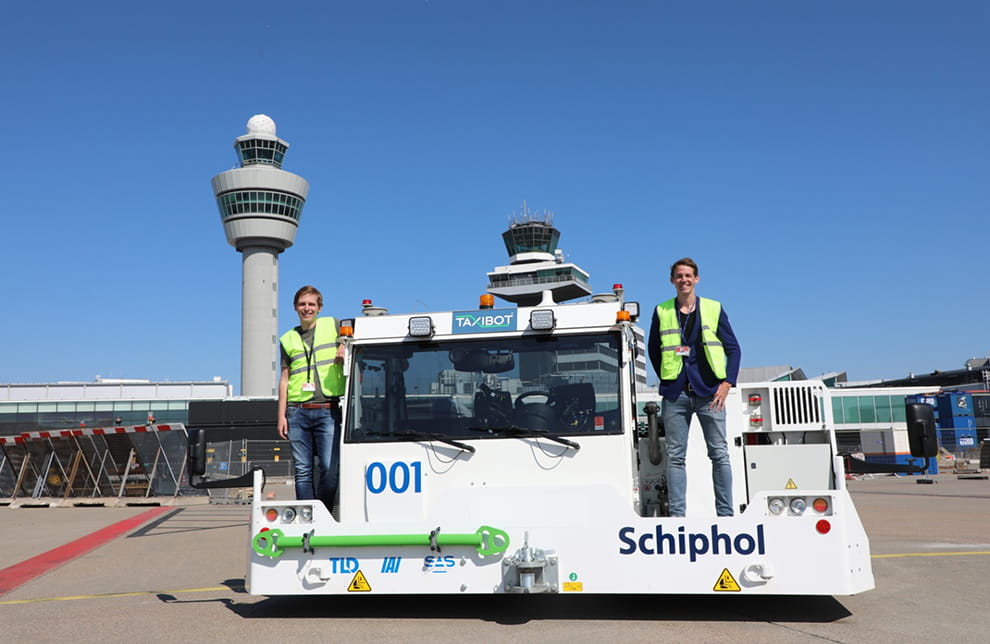
Who are we?
Allow us to introduce ourselves: we are Dirk Bresser and Simon Prent. Building on our extensive background in aviation and airport operations, around three years ago we first started talking about what has since become known as ‘sustainable taxiing’. It’s an umbrella term for various techniques for moving aircraft from A to B on the ground, without using the engines of the aircraft itself. This is one of the main ways in which aviation can make a contribution to easing environmental problems in the relatively short term. We have already given an interview and published a press release on the subject.
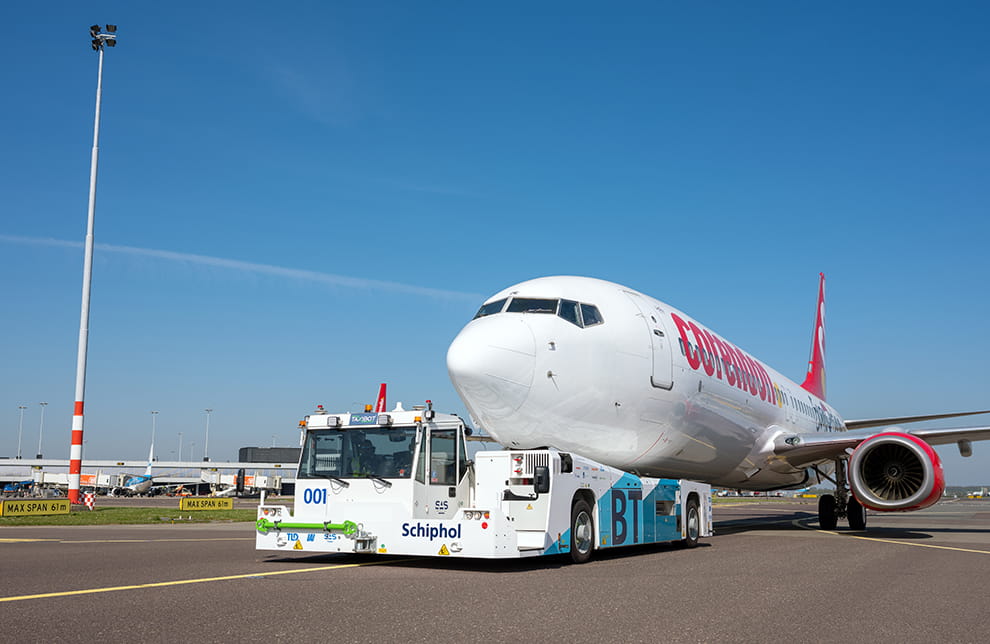
Why launch a blog?
While sustainable taxiing is at the centre of our world, we fully understand that most people have other things on their mind. Sustainable taxi concepts are something of a niche within the aviation sector. However, they can make a substantial difference to problems that affect each and every one of us. Wider interest generates a wide range of opinions. Hardly surprising, therefore, that sustainable taxiing has got people talking. All kinds of questions arise. If it’s such a good idea, why haven’t we been taxiing sustainably for years? Does sustainable taxiing really make sense? What types of sustainable taxiing are there? Questions we plan to answer in this series of blogs on the subject.
Our aim
Sustainable taxiing presents more of a challenge than you might expect, but the opportunities it offers also exceed most people’s expectations. Opportunities that are too great to ignore. By telling the whole story and opening up a dialogue, we can help each other take advantage of these opportunities. Not only in the Netherlands but worldwide, our aim is to maximise the potential of this innovation to make aviation more sustainable.
Interested in finding out more about the opportunities we have in mind? Follow our blogs and share your thoughts with us directly on LinkedIn.
Read the previous blogs
-
Testing an Autonomous Baggage Vehicle
Published on:Schiphol and KLM are testing Auto-DollyTug. This vehicle will separate the baggage of passengers with long transfer times from those with short transfer times.
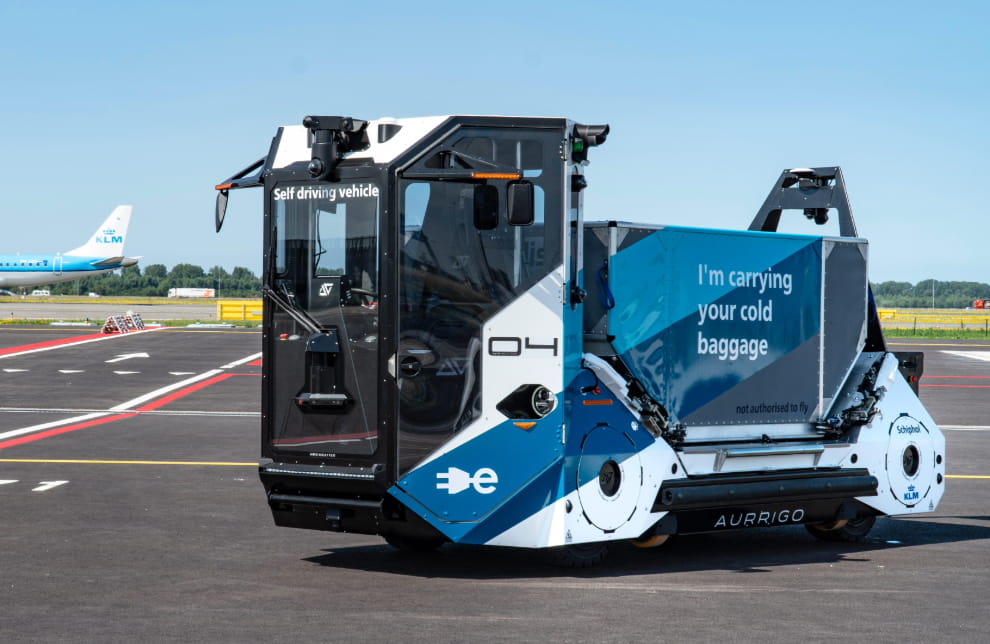
-
Monitoring APU usage to reduce emissions
Published on:Various sector partners at Schiphol are committed to reduce aircraft APU usage at Schiphol. To achieve this we are trying different things.
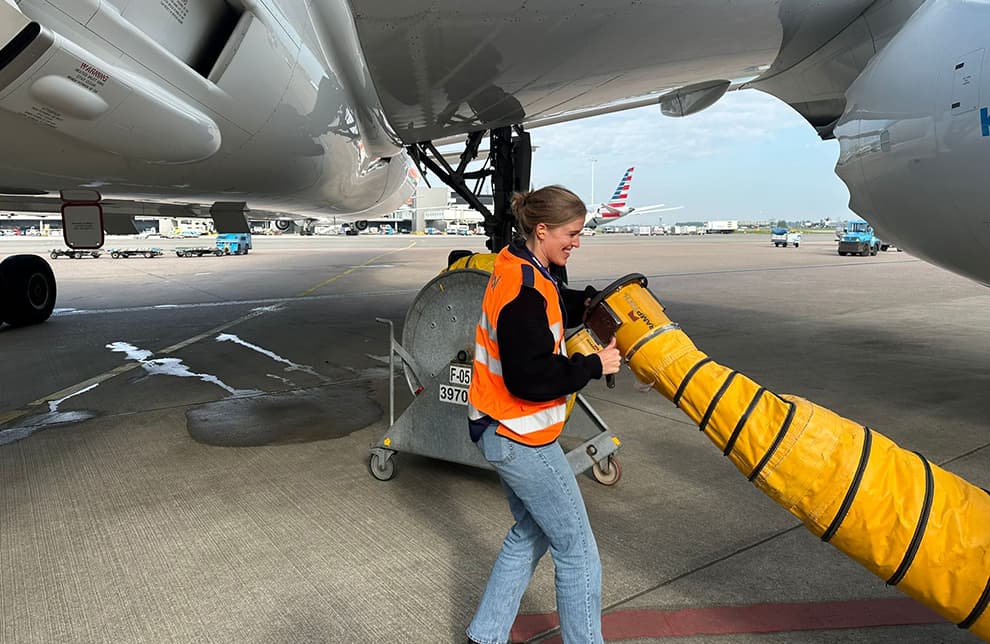
-
Tap and go with your Digital Travel Credential!
Published on:Can you board and cross the border faster with a digital travel document? At the request of the EU, we are testing a DTC together with the government and KLM.
